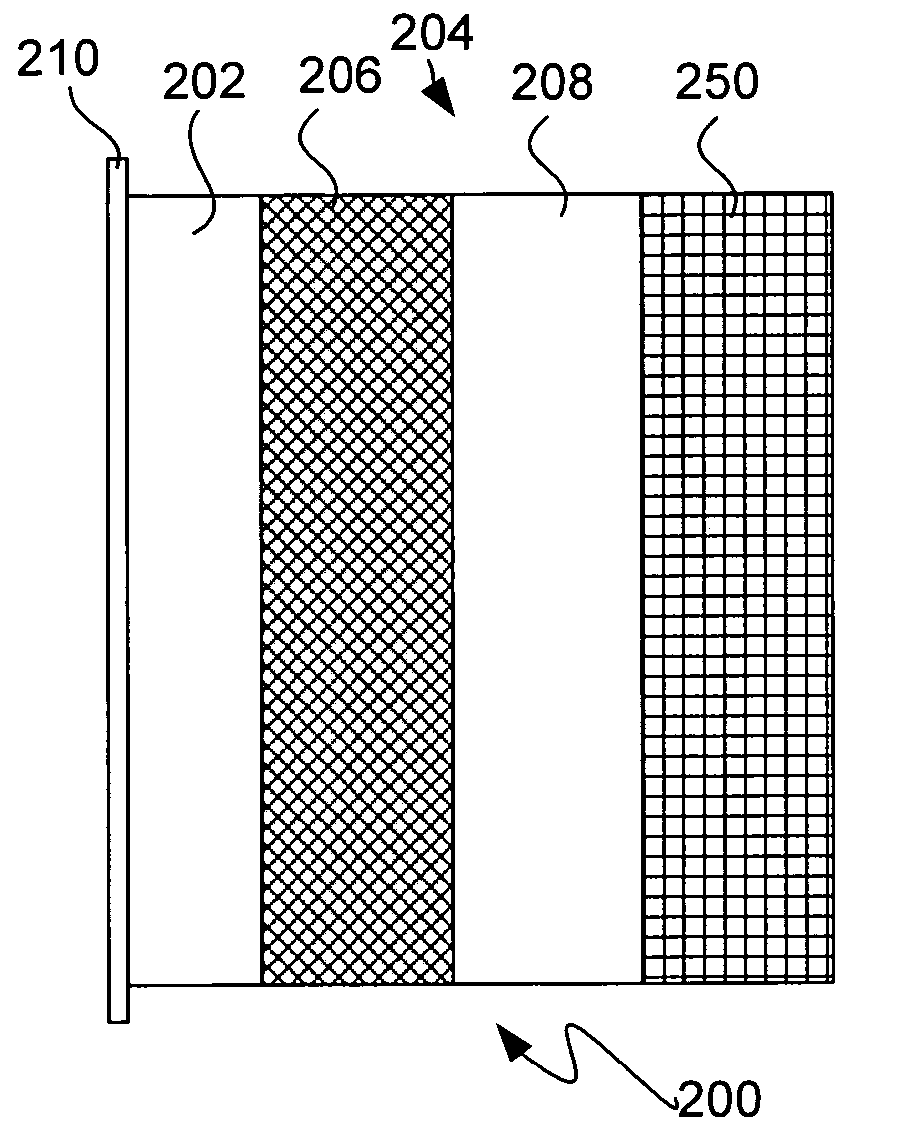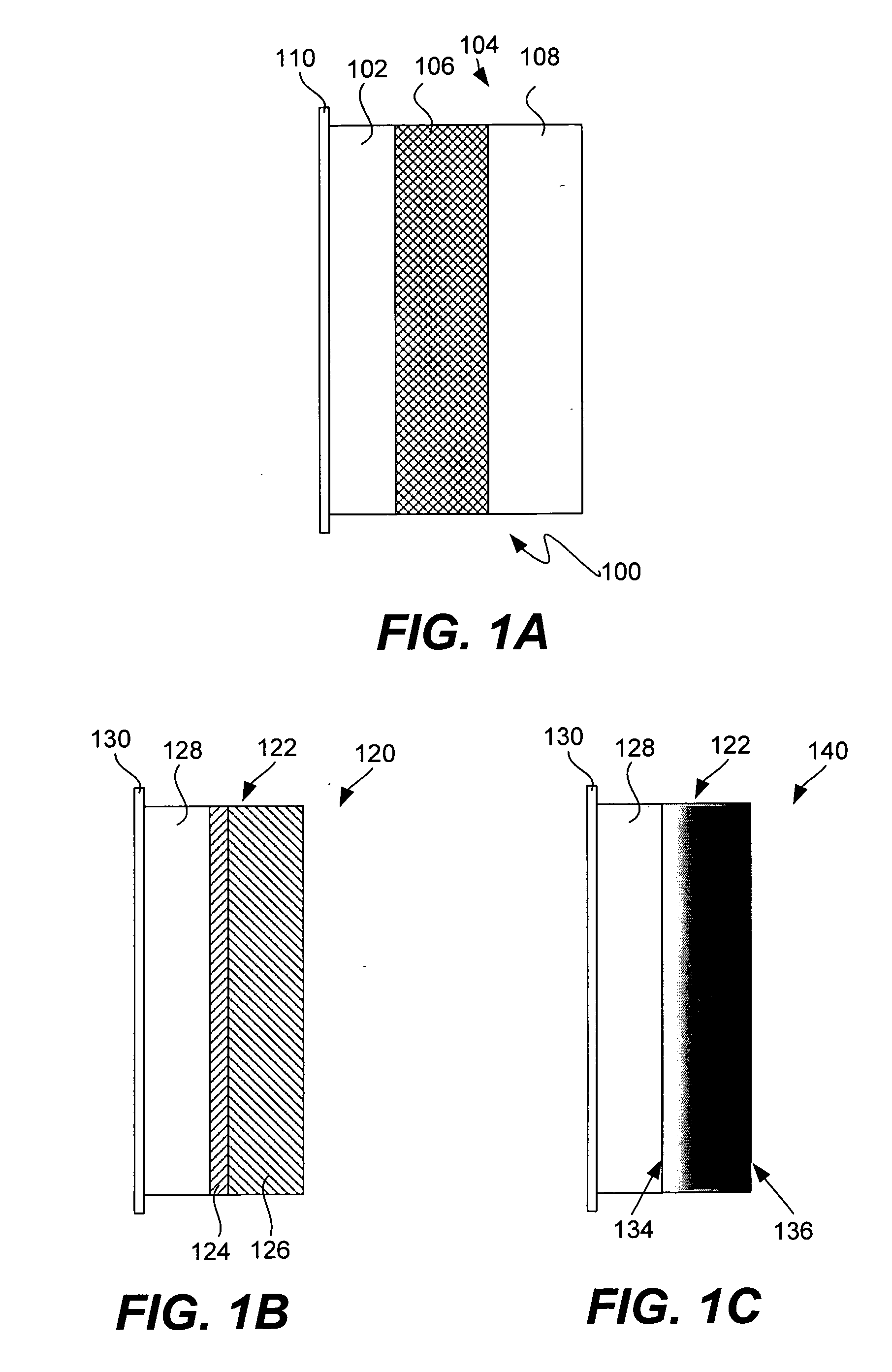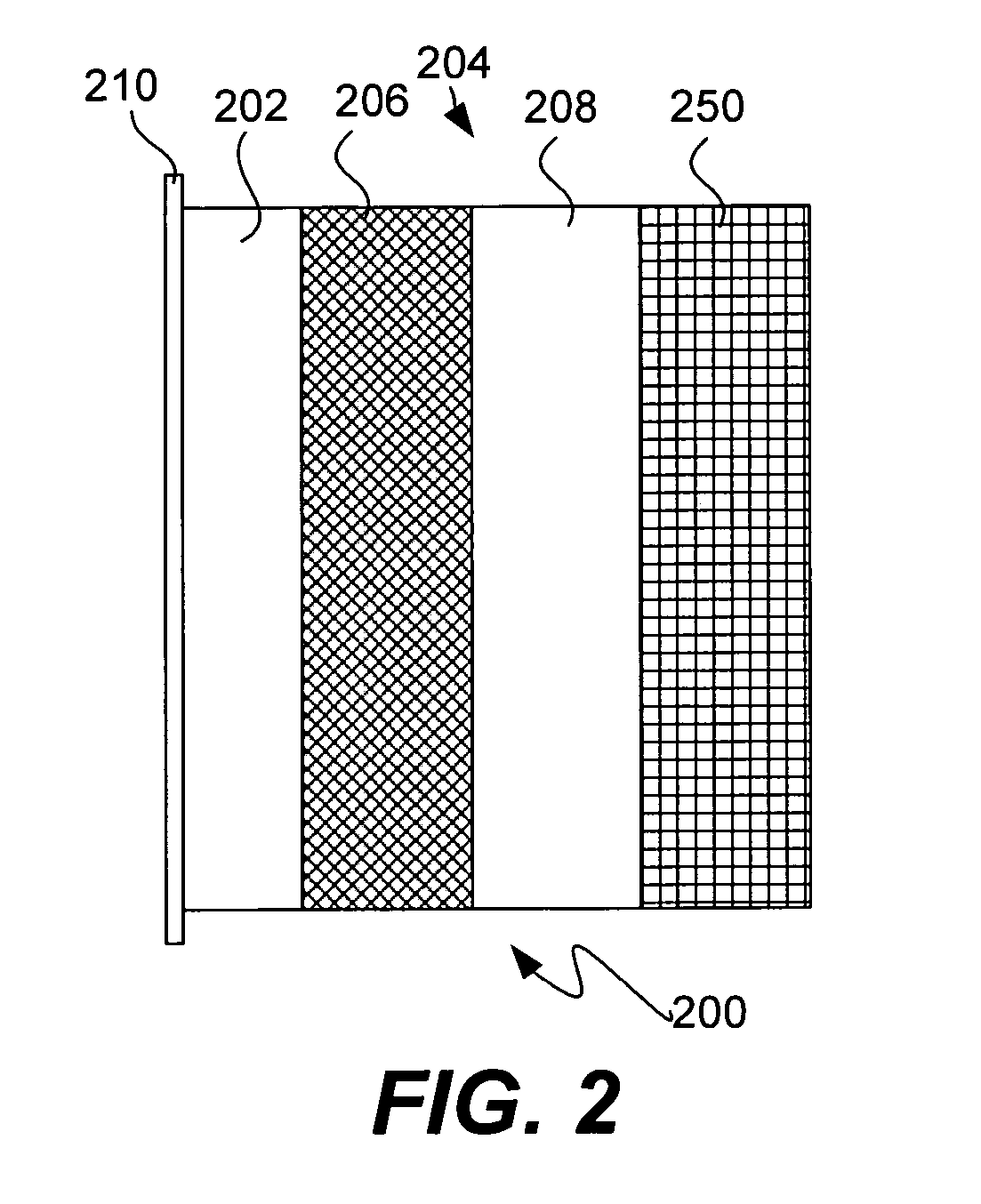Solid electrolytes based on lithium hafnium phosphate for active metal anode protection
a technology of lithium hafnium phosphate and solid electrolyte, which is applied in the direction of non-aqueous electrolyte cells, cell components, cell component details, etc., can solve the problems of failure of rechargeable lithium metal batteries
- Summary
- Abstract
- Description
- Claims
- Application Information
AI Technical Summary
Benefits of technology
Problems solved by technology
Method used
Image
Examples
example 1
Preparation of LiHf2(PO4)3 Solid Electrolyte
[0108] LiHf2(PO4)3 solid electrolyte was prepared using HfO2, Li2CO3, and (NH4)3HPO4 as starting materials. The powders of the starting materials were mixed together using a THINKY mixer and calcined in a platinum crucible at 900° C. for 4 hrs in air. The calcined mass was finely ground using an agate mortar and pestle, ball milled in methanol, dried and sintered at 900° C. for 4 hrs in air. The resulting product was ground into fine powder using ball milling. An x-ray powder diffraction analysis showed that the prepared material was a LiHf2(PO4)3 solid electrolyte.
example 2
Chemical Stability of the LiHf2(PO4)3 Solid Electrolyte in Seawater
[0109] The chemical stability of LiHf2(PO4)3 in seawater was tested in order to assess the suitability of this material as a solid electrolyte membrane that can protect a Li anode from aqueous electrolyte in Li / seawater cells. A fine powder of LiHf2(PO4)3 was immersed in synthetic sea water (Ricca Corp.) and stored for 1 month at 50° C. under conditions of continuous stirring. After filtration, the liquid phase was analyzed by ICP-MS for concentrations of the elements leached out from LiHf2(PO4)3 (Elemental Research Inc., North Vancouver, BC, Canada). Exposure of powdered LiHf2(PO4)3 solid electrolyte to a large volume of seawater and elevated temperature during storage the performed test can be viewed as an accelerated test of long term performance. Test data is presented in Table 1 which shows concentrations of various elements released into seawater after LiHf2(PO4)3 exposure for 1 month at 50° C. It is clear tha...
PUM
 Login to View More
Login to View More Abstract
Description
Claims
Application Information
 Login to View More
Login to View More - R&D
- Intellectual Property
- Life Sciences
- Materials
- Tech Scout
- Unparalleled Data Quality
- Higher Quality Content
- 60% Fewer Hallucinations
Browse by: Latest US Patents, China's latest patents, Technical Efficacy Thesaurus, Application Domain, Technology Topic, Popular Technical Reports.
© 2025 PatSnap. All rights reserved.Legal|Privacy policy|Modern Slavery Act Transparency Statement|Sitemap|About US| Contact US: help@patsnap.com



